The Best Hotels in Puglia to Book for an Idyllic Italian Escape
It’s hard to imagine that as little as 20 years ago, if Puglia was known to those outside of Italy at all, it was simply for being the heel on the peninsula’s boot. Fast forward two decades later, and it’s not only firmly cracked the code for a perfect Mediterranean vacation, but ranks among the most desirable destinations for Italophiles who want to venture beyond the well-established tourist hotspots of Tuscany and the Amalfi Coast.
It’s not difficult to see why. The relatively flat landscape features some of the most gorgeous towns in Italy—from the bleached walls of Ostuni to the quaint domed roofs of Alberobello’s traditional trulli—most of which are packed with knotty medieval streets, gleaming white Baroque churches, and bustling markets. Around its lengthy coastlines you’ll find some of Italy’s most pristine beaches, from soft white sand to rocky plunge pools with crystal clear water. Then, of course, there’s the food. Puglia’s specialty, given it spans both the Adriatic and Ionian seas, is the freshest fish imaginable, with sea urchins and octopus serving as a particularly delectable highlight. It’s the birthplace of burrata, too; and don’t forget to try some orecchiette, handmade by a nonna on the winding streets of Bari’s old town.
It also helps that there is now a burgeoning scene of luxury hotels, all offering a surprisingly diverse mix of experiences. There are the traditional masserias, or farm complexes, with their whitewashed walls, rustling olive groves, and dusty pink sunsets, which have played no small part in it being nicknamed by some as “the new Tuscany,” even if comparing it to other Italian regions feels like underselling Puglia’s specific charms. Meanwhile, in Salento, the southern part of the region—the stiletto on the heel of the boot, if you like—a number of small-scale boutique hotels are offering a more eclectic range of genuinely unique stays.
All of which is to say, there’s never been a better time to visit Puglia. Here, Vogue rounds up six of the best hotels to visit this summer—and return to, again and again.
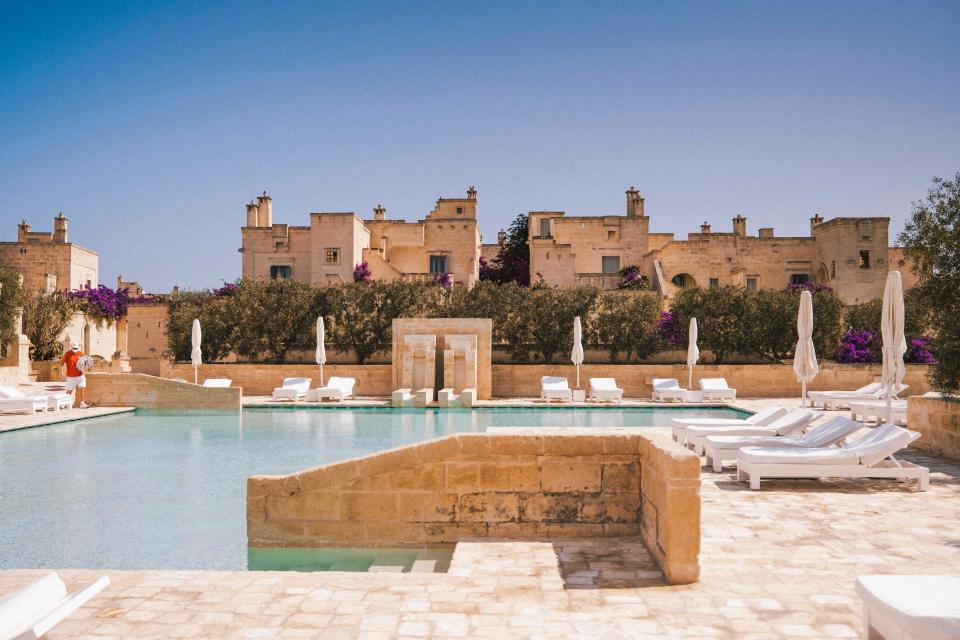
Borgo Egnazia
Walking through the cobbled streets that comprise Borgo Egnazia as the evening light casts a golden glow over the clocktower, you wouldn’t guess for a moment that this sprawling, breathtakingly beautiful property was only built in 2010. That’s right: Every one of Borgo Egnazia’s meticulously designed rooms, suites, and villas—183 in total—might appear centuries-old on the surface, but they reach a world standard in luxury mod cons. (Rumor has it that architect Pino Brescia, a native Puglian who was hired for his knowledge of the quirks of the region’s traditional building techniques, even went around chipping at the walls with a chisel to ensure the creamy local sandstone looked as authentically weathered as possible.) When you find yourself getting pleasantly lost in Borgo Egnazia’s alleyways, it’s clear that was part of the plan.
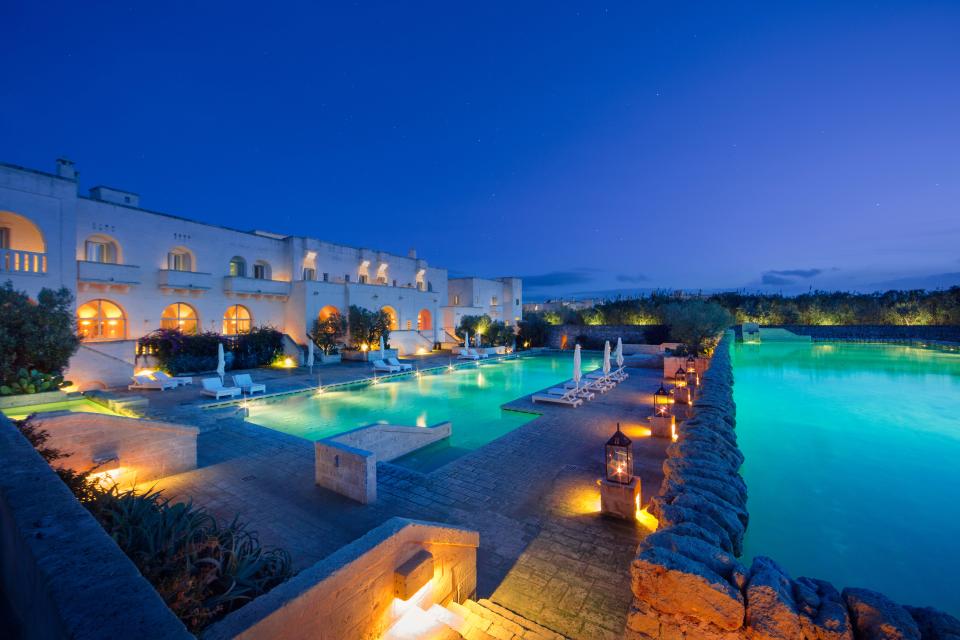
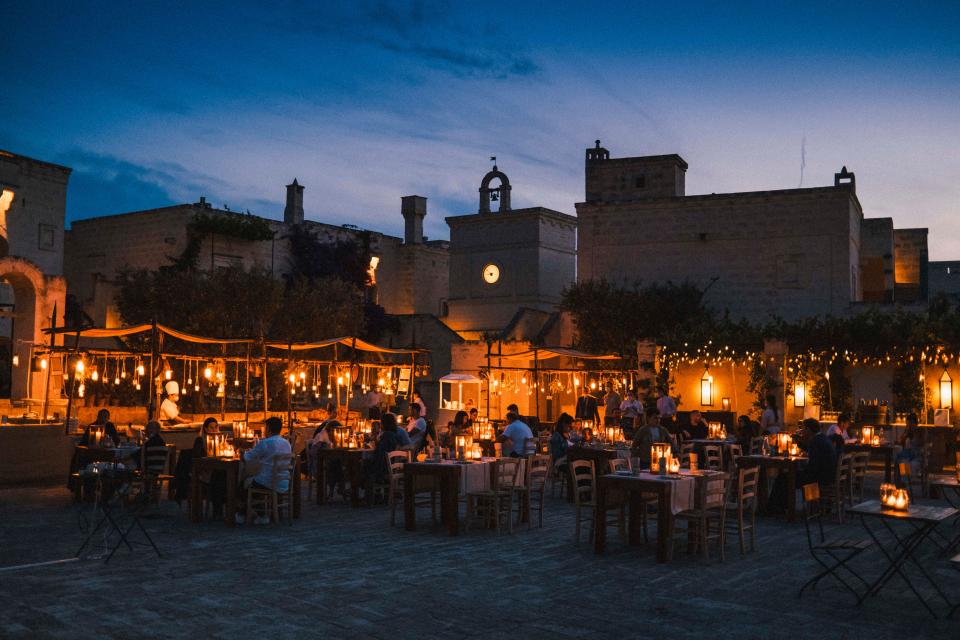
While Borgo Egnazia is very much the brainchild of couple Aldo Melpignano and Camilla Vender—the latter also runs an exquisitely curated boutique, Bottega Egnazia, as part of the hotel complex—the story actually runs a generation further back; specifically, to Melpignano’s parents. After establishing Masseria San Domenico, the first luxury hotel in the region in 1996, Sergio and Marisa Melpignano played a crucial role in establishing Puglia as the growing tourist hotspot it is today by making a conscious effort to market the region abroad. With Melpignano and Vender’s willingness to both take up the mantle and push that vision to the next level, the wildly ambitious Borgo Egnazia project came to be.
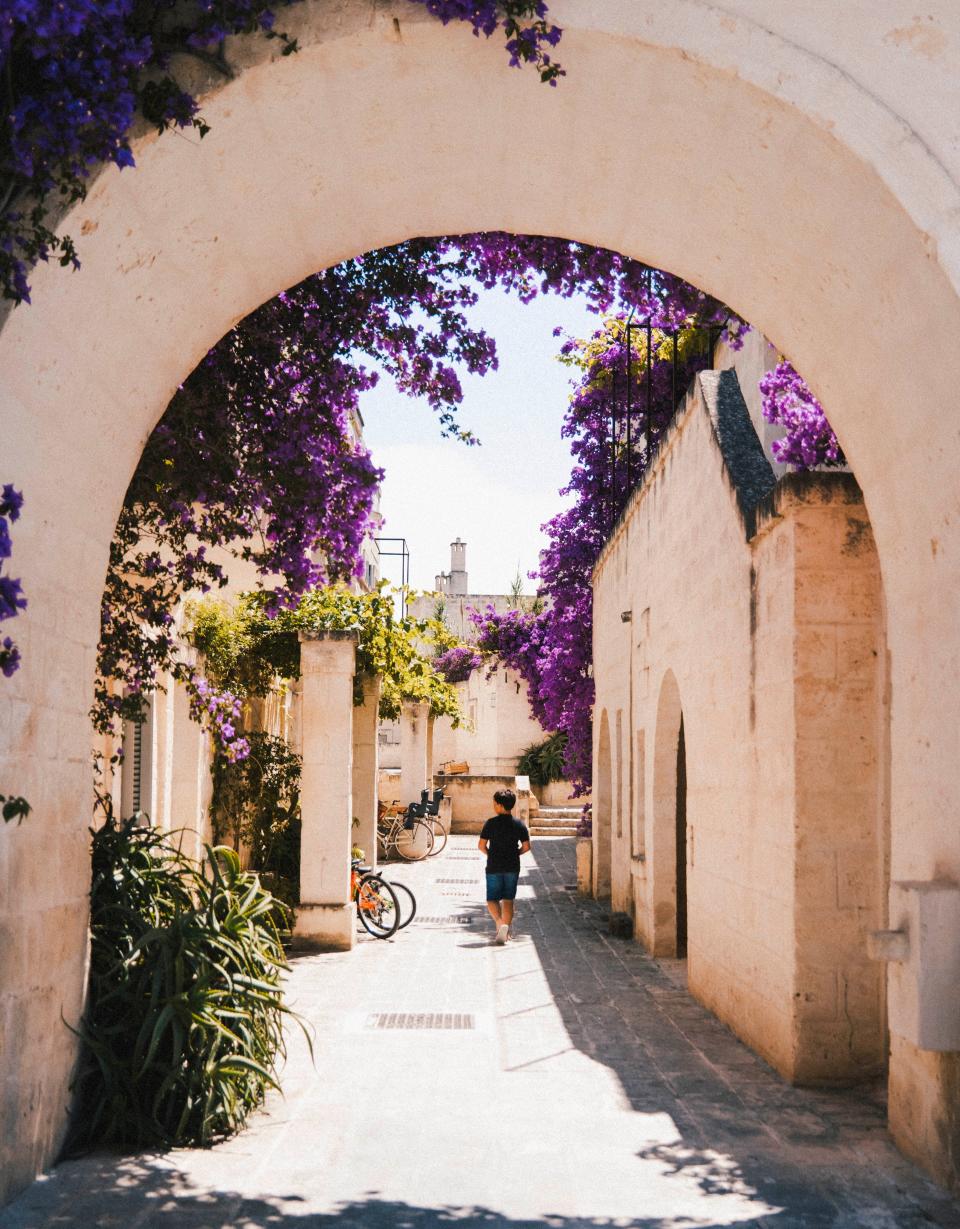
There are almost too many experiences available at Borgo Egnazia to list: two beach clubs, a golf course, an atmospheric spa inspired by Roman baths, vintage car tours, cooking classes, oil and wine tastings, and trekking. But despite the enormous scale of the complex and the near-overwhelming number of things to do, there’s an innate sense of calm that radiates from the property’s white stone walls, as well as a sense of total privacy within each of the bedrooms or casette suites, named quite literally after “little houses.” (This feeling of seclusion is undoubtedly a reason why it’s become a particular celebrity favorite, most famously hosting Justin Timberlake and Jessica Biel’s 2012 wedding. Recent guests have included Victoria and David Beckham.) Borgo Egnazia’s tagline is “nowhere else”—after a few days in paradise there, you’ll find it impossible to disagree.
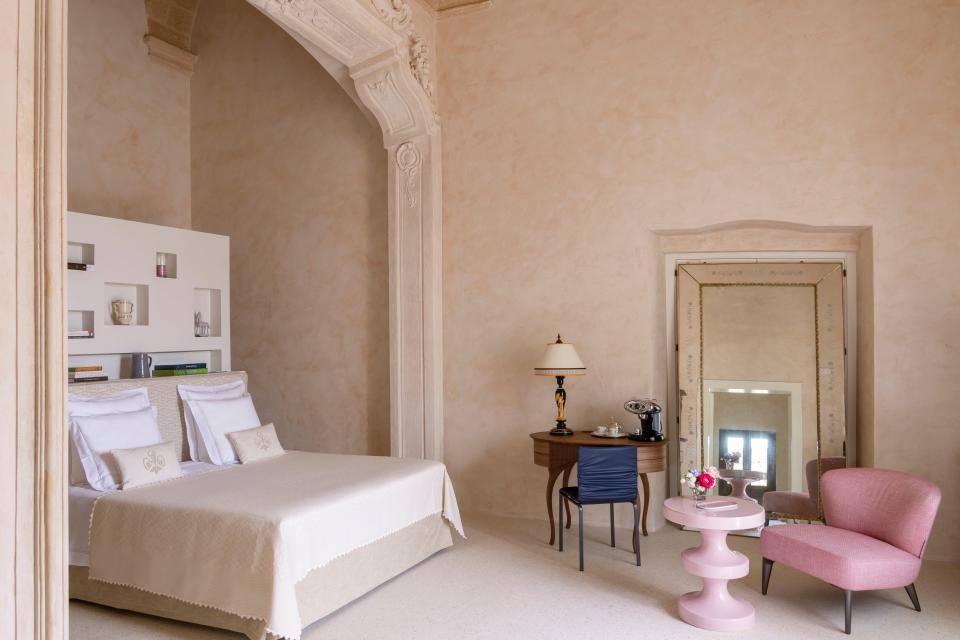
Castello di Ugento
In the region of Salento, 15 minutes or so inland from the white sandy beaches that line the peninsula’s southern tip, lies the tranquil town of Ugento. And at its heart sits Castello di Ugento, the impressive castle at the town’s highest point. Most of what is visible today was constructed in the 17th century, but it also features the foundations of an 11th-century Norman tower, rediscovered while the building was being lovingly refurbished half a decade ago, and that can now be seen through glass floors in the dining area.
It’s the kind of attention to detail—and instinct for preservation—that characterizes the property’s restoration at the hands of Massimo d’Amore and his partner, Diana Bianchi. (The d’Amore family’s ownership of the castle dates all the way back to its 17th-century splendor.) Nine individually decorated rooms are complemented by an orchard garden as well as a sister property a few minutes down the road, Masseria Le Mandorle, that features a swimming pool and slick sports facilities.
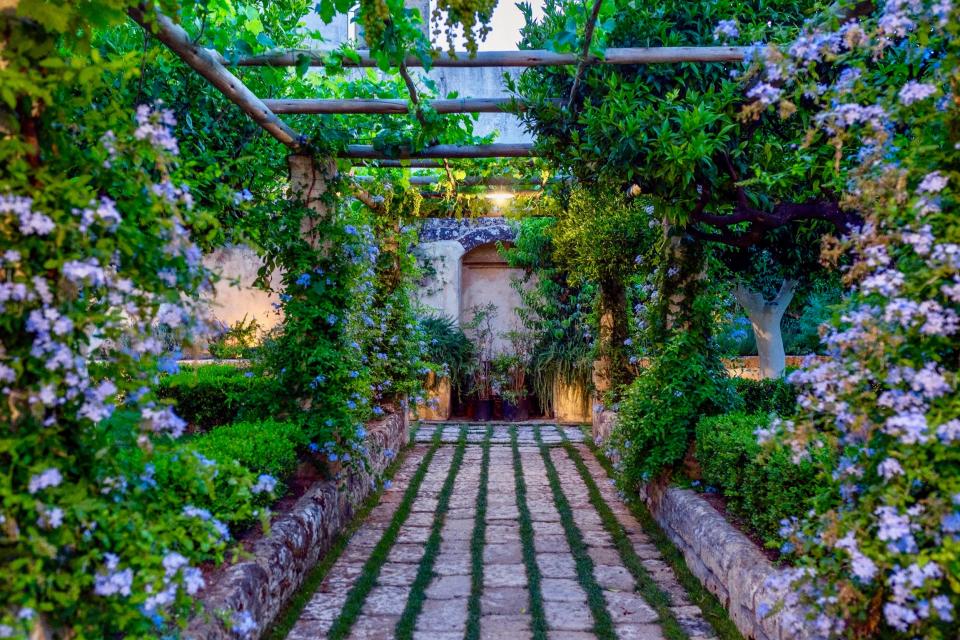
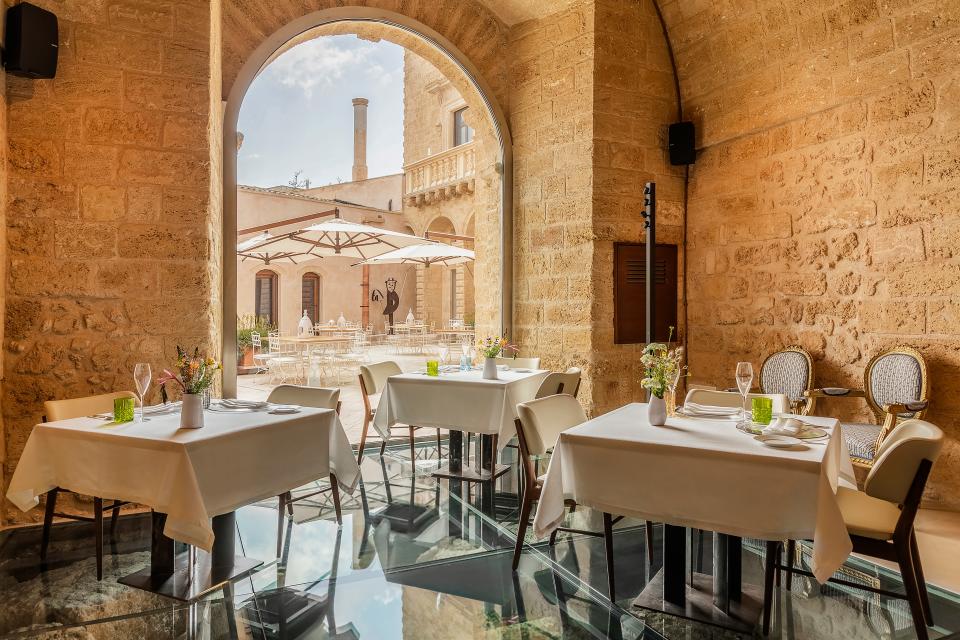
A major highlight here is the food: The hotel restaurant, Il Tempo Nuovo, sees chef Tommaso Sanguedolce put an impressively fresh and unfussy twist on traditional Puglian cuisine, while the now well-established Puglia Culinary Centre offers cooking courses and classes for everyone from beginners to Michelin-star chefs wanting to learn more about Italian cuisine. Finally, there’s an impressive series of rooms on the building’s piano nobile featuring Baroque frescoes that have been recently restored, within which Bianchi is gearing up to stage a series of exhibitions featuring contemporary artists both local and from further afield. When it comes to offering opportunities for Puglian cultural immersion, Castello di Ugento is hard to beat.
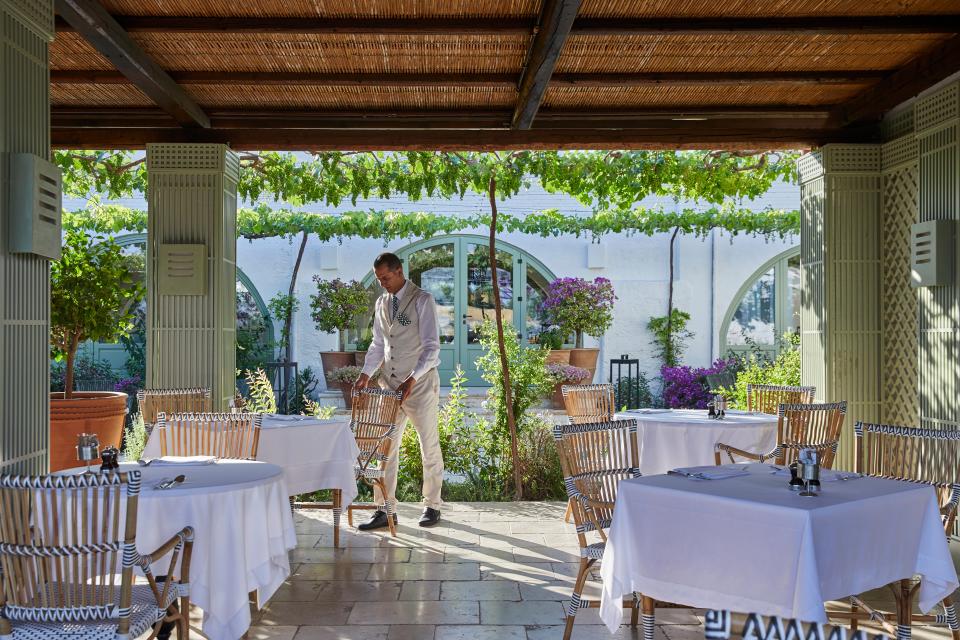
Masseria Torre Maizza
Masseria Torre Maizza, found in the cluster of luxurious masserias that have sprung up between the towns of Fasano and Savelletri, was established as one of the first high-end stays in the region back in the 2000s. Since being taken over and refurbished by Rocco Forte Hotels in 2019, however, the property has found a new lease on life. In many ways, it’s the quintessential vision of a relaxed masseria holiday with all of the rustic details of a typical farm stay: a sparkling blue pool, fresh fruit, bicycles to ride through the olive groves. But it’s the details found in its interiors and dining that elevates it, largely thanks to the aesthetic vision realized by Olga Polizzi, Rocco Forte’s sister and the chain’s design director. The hotel’s gorgeous restaurant, for example, sits within a pergola draped with ivy and roses overlooking the property’s orchard.
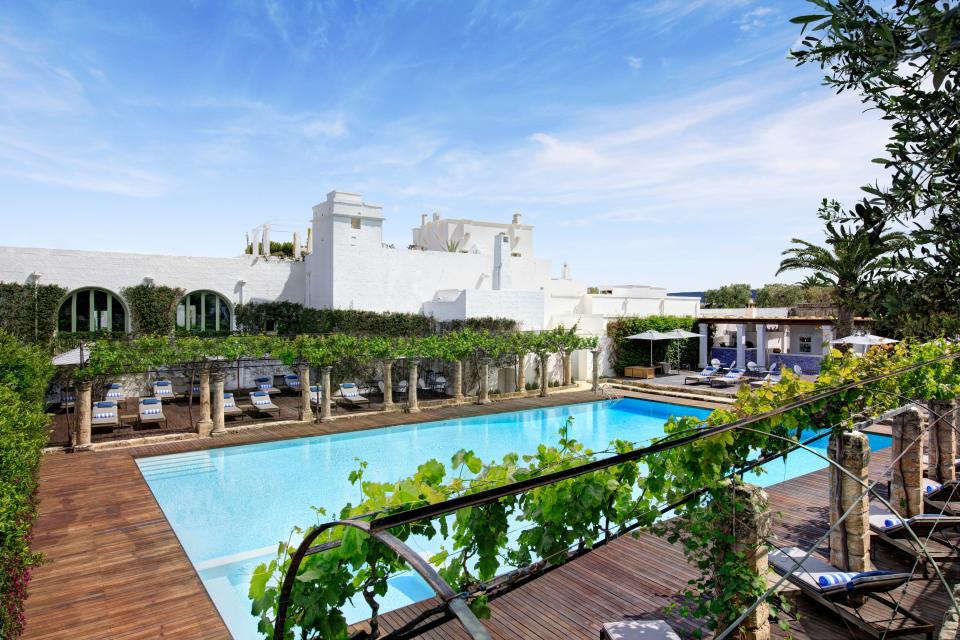
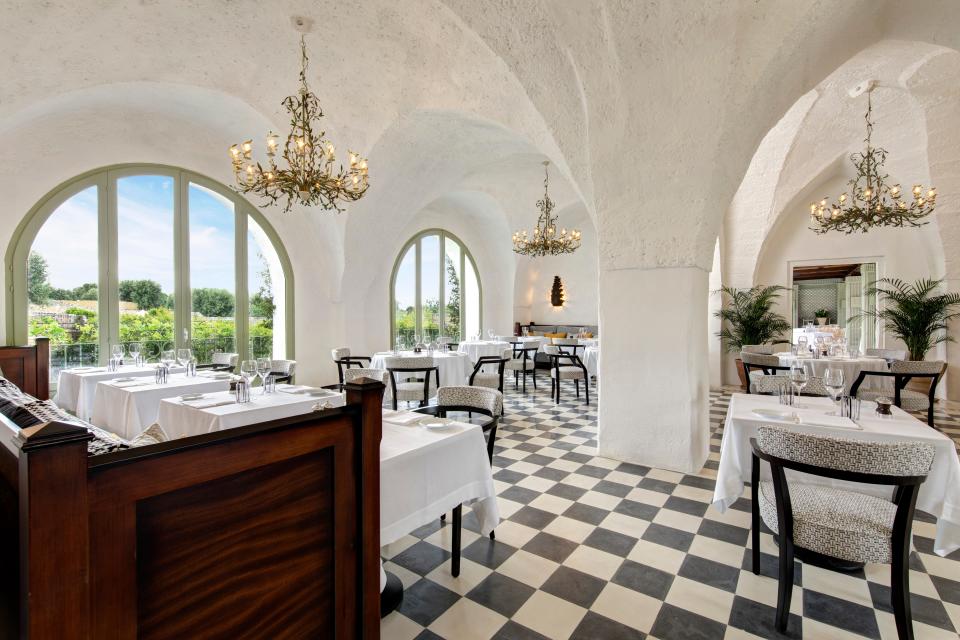
There’s a sense, when at Masseria Torre Maizza, that time has stopped. The large pool area features a bar offering crisp local wines and creative riffs on Italian aperitivi. The spa is stocked with products by Forte’s daughter, Irene, with scrubs and oils directly inspired by the Mediterranean botanicals of southern Italy. (Despite being a hotel group, Rocco Forte’s relatively modest size ensures much of its most welcoming details are those which have been kept within the family.) It’s a small slice of heaven that feels almost specifically designed for you to laze away a summer’s afternoon under an orange tree, book in hand, as a cool sea breeze rustles through the trees.
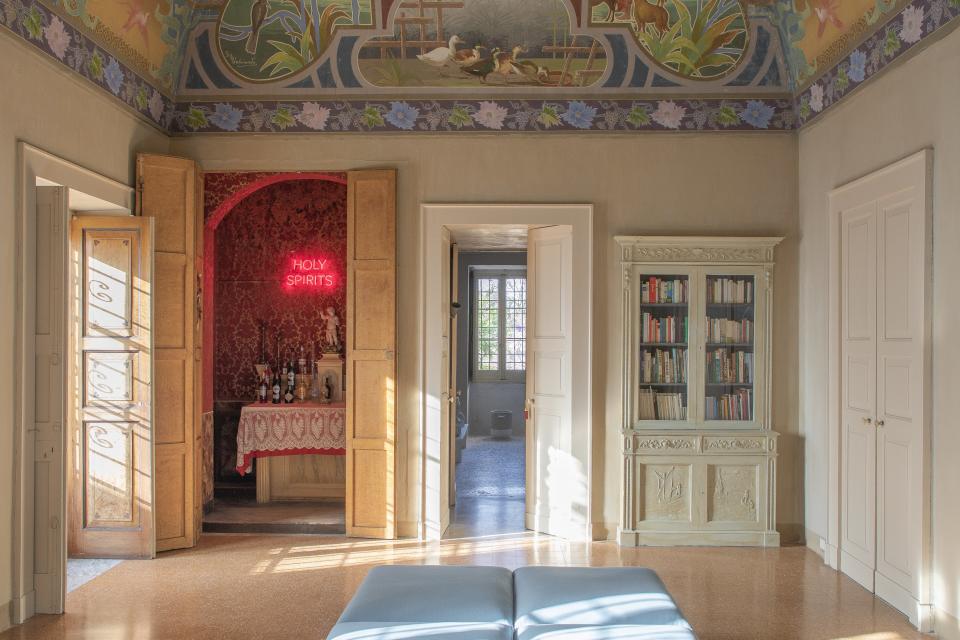
Palazzo Daniele
Another option in the Salento region is Palazzo Daniele, found in the small but inviting town of Gagliano del Capo that is merely five minutes drive from some of the region’s most spectacular beaches. Yet the real delights of Palazzo Daniele lie within its own 19th-century walls, which, despite being smack in the center of town, include peaceful gardens and a beautifully outfitted swimming pool. The hotel’s playful but tastefully realized decor is partly the result of its previous life hosting artist residencies. Its owner, former lawyer and art collector Francesco Petrucci, decided to collaborate with his friend Gabriele Salini—who also owns the modish G-Rough hotel in Rome—to convert the property into a nine-room boutique stay that opened in the spring of 2019.
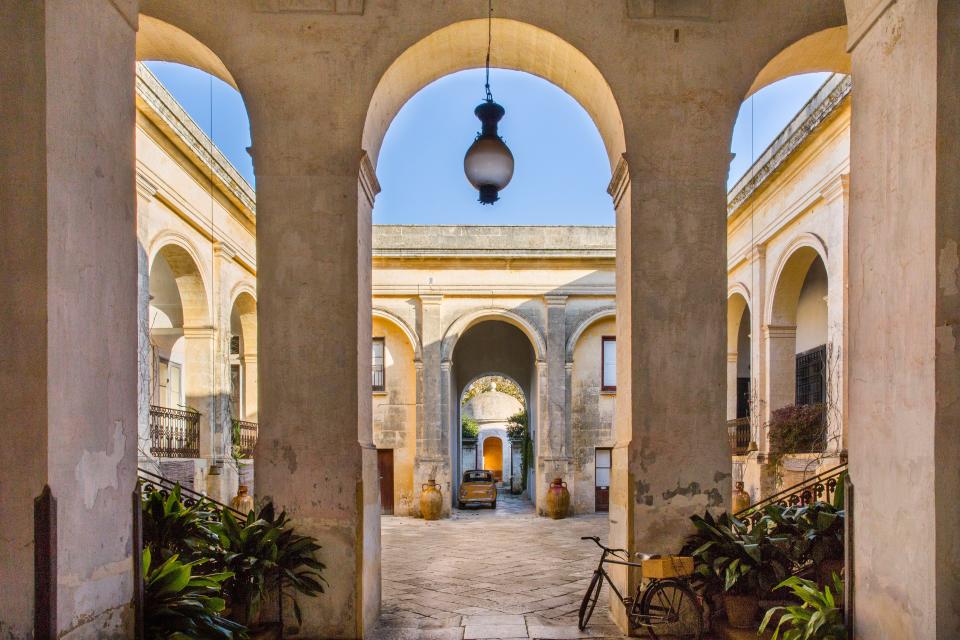
The result is a charming mish-mash of ceiling frescoes with cutting-edge contemporary art, sympathetically reconciled by the Milanese architects and designers Ludovica and Roberto Palomba. The monastic plaster walls have been left largely untouched, their weathered surfaces and cracks kept intact, with any interventions largely offered by artist-designed light fittings and the occasional piece of carefully placed modernist furniture. Each room contains its own unexpected details. The bathroom might be accessed by a narrow staircase that once included a secret passageway that extended all the way to the nearby beaches, while even a more conventional en suite features a rain shower in the middle of the room with a shell-like basin, so you can live out your best Birth of Venus fantasy.
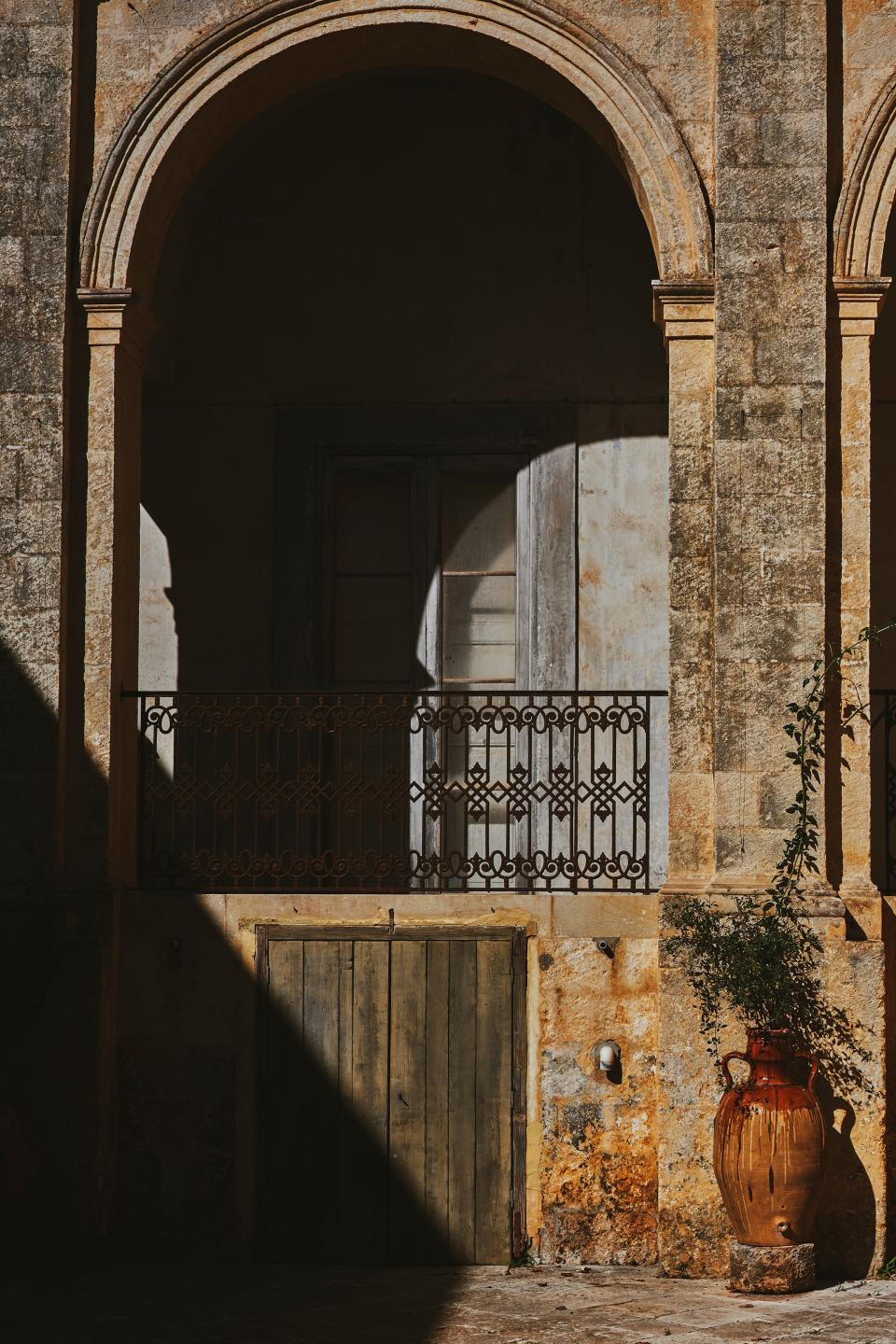
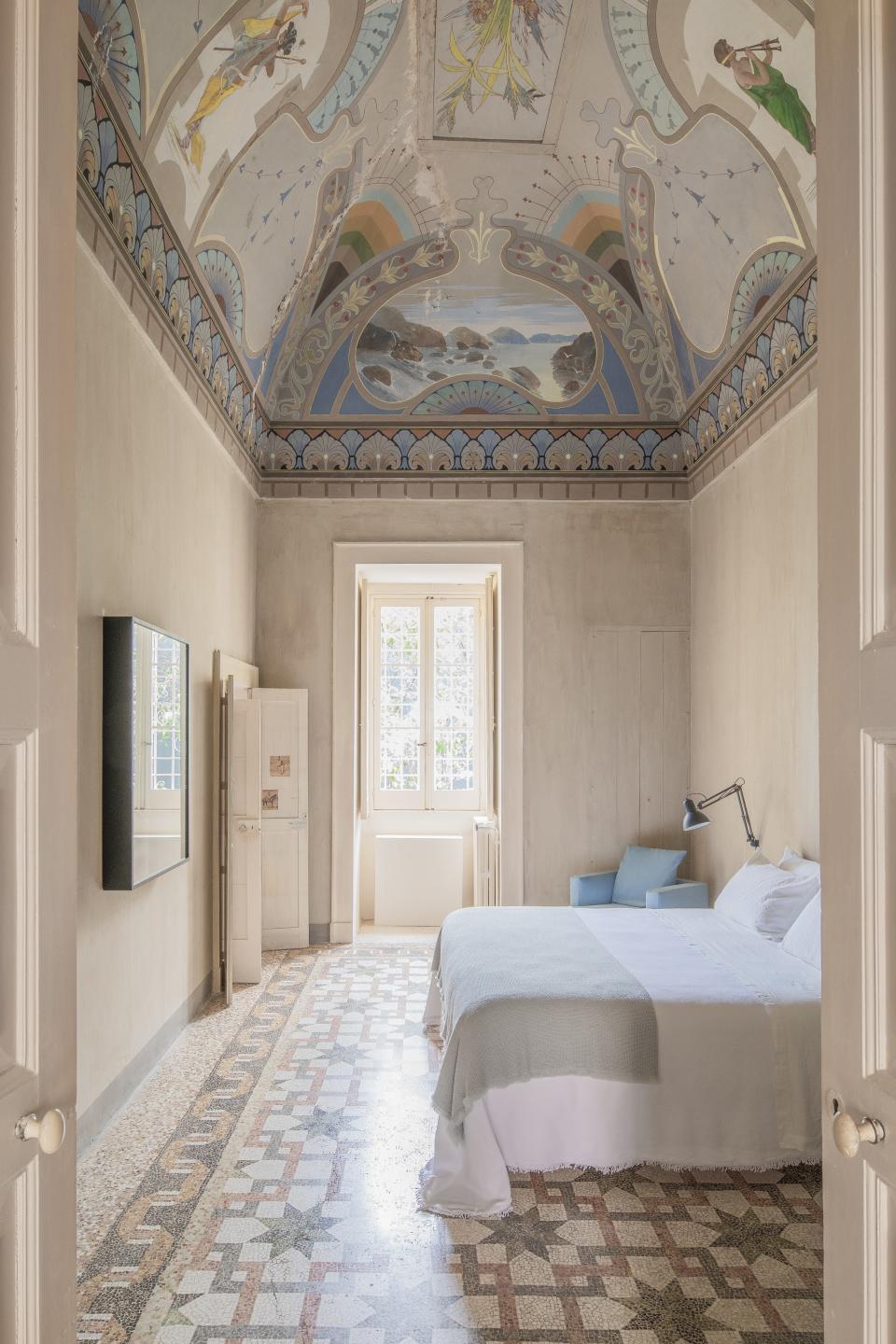
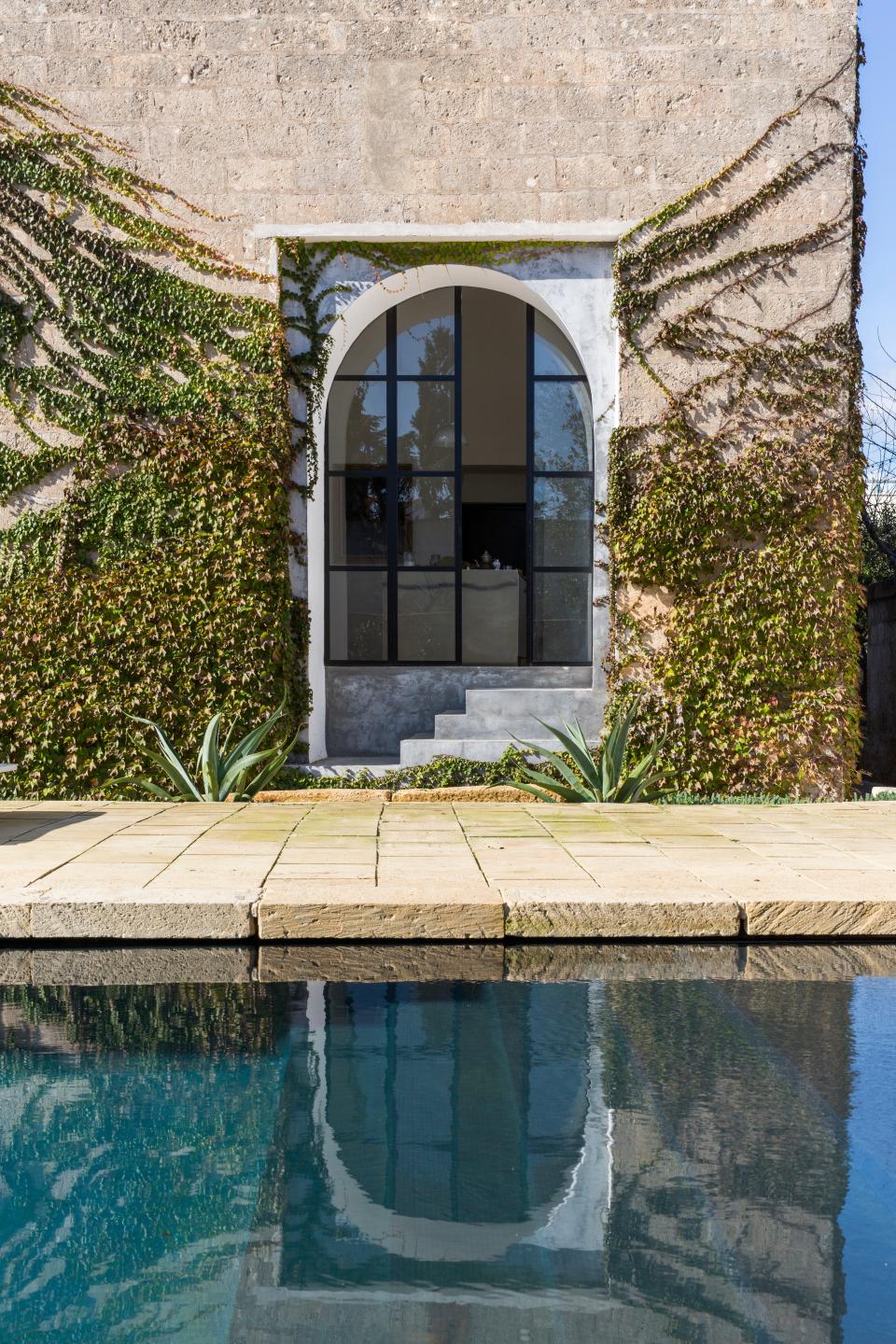
Again, the culinary offering is a major highlight here. An open kitchen means you can help yourself to pastries or request eggs your way in the morning with the help of in-house cook Donata and her ever-smiling sous chefs; at lunch, they’ll prepare a meal of however many courses you can handle in the shaded area by the pool, all sourced from local farmers. At night, the outdoor area transforms once again, with string lights sparkling in the trees and an on-site bartender ready to whip up one of their signature inventive cocktails. The hotel’s motto is “questa casa non è un albergo,” or “this house is not a hotel,” a fact that is reflected in the generously proportioned shared living areas and the open bar built around a former religious shrine. But given that Petrucci still keeps his own apartment within the complex as his home, it’s more than just a tagline—after a few hours within Palazzo Daniele, you’ll feel like the place is yours too.
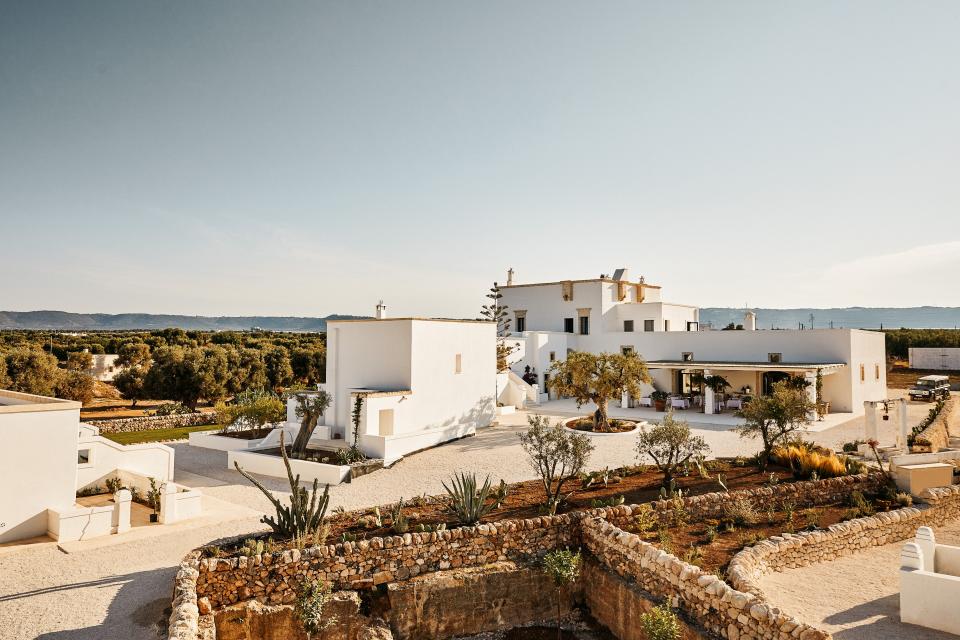
Masseria Calderisi
A relative newcomer to the scene—and all the more energetic for it—Masseria Calderisi was established last year by its charismatic German owners, Max and Jutta von Braunmühl, who fell in love with Puglia in the 2000s and married in the region a decade ago. (The pair, and their children, can often be found mingling with guests, whether escorting them to the sea in a four-wheel drive or stopping by their dinner tables for a digestivo.) There’s an exuberant feeling about this property, evident in the range of activities on offer—an afternoon at their private strip of beach, a boat trip along the Adriatic, or a body scrub at the spa with honey, salt, and lemon from the masseria’s gardens—as well as in its lovely boutique which stocks local ceramics, jams, and olive oils alongside casual pieces and beachwear from the likes of Etro, Max Mara, and Missoni.
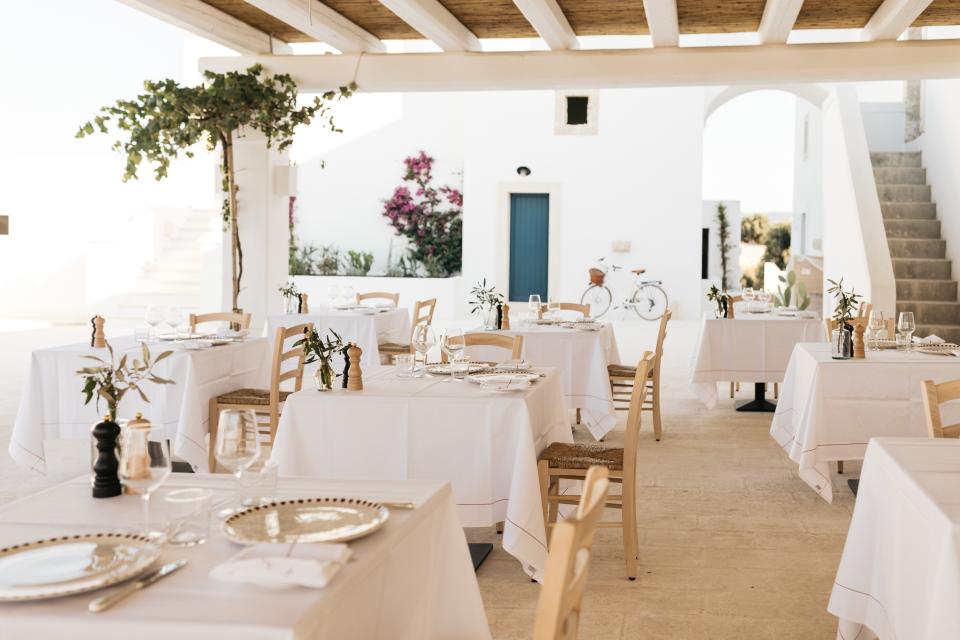
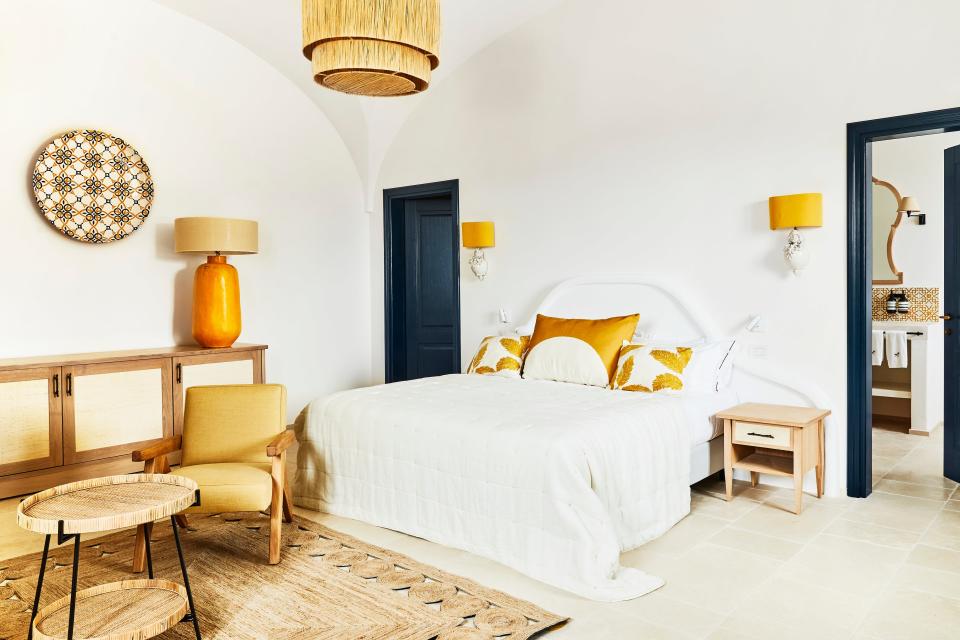
This sense of warmth and liveliness extends to the impeccable hospitality, which manages to be friendly and keenly attentive without ever feeling overbearing. So too is it visible in the organic conviviality between guests, many of whom are clearly satisfied to chat about finding this undiscovered gem within the region’s ever-growing number of luxury masserias. If you’re looking to strike up conversation with those on the sun lounger next to you, there’s no awkwardness here; you might even bump into them again while participating in a morning bread-baking session in the hotel’s restored wood-fire oven, or at the pizza party in the large courtyard that takes place twice a week. Masseria Calderisi is a slice of classic Puglian paradise with a fresh, youthful-feeling twist.
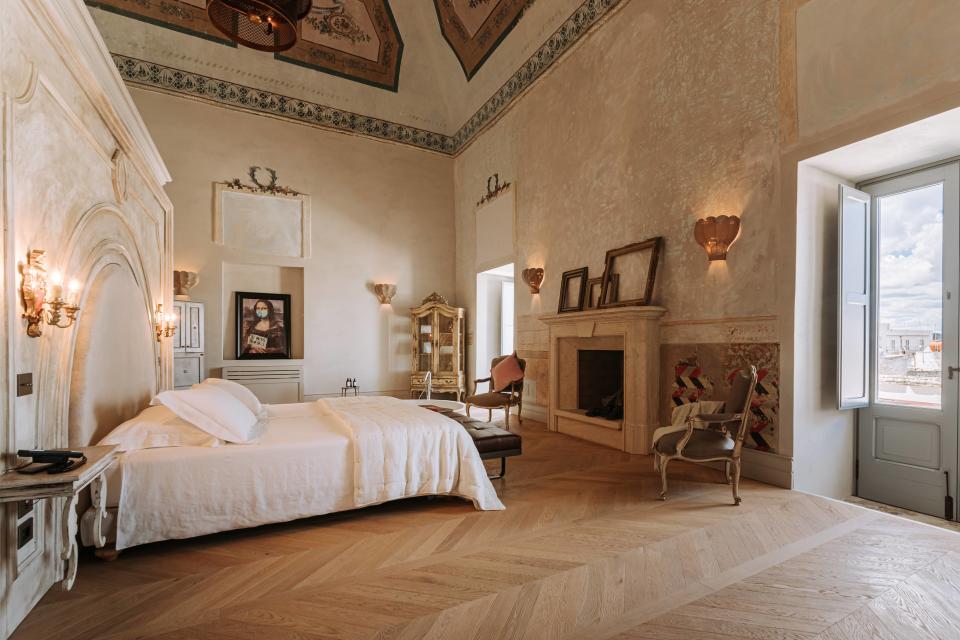
Paragon 700 Boutique Hotel & Spa
Even from the outside, Paragon 700 is no ordinary Italian palazzo. Its striking facade of red rusticated stone sticks out within the spectacular “white city” of Ostuni, while the restored vintage car that sits outside offers something of a clue to its unconventional mix of the past and present. But stepping inside is to enter another world entirely. The weird and wonderful brainchild of its founders, interior designers and partners Pascale Lauber and Ulrike Bauschke, they clearly saw the restoration of this mysterious building (its exact origins and dates of construction still remain largely unknown) as an opportunity to unleash their wildest design instincts. The property opened last summer with head-spinningly fabulous results.
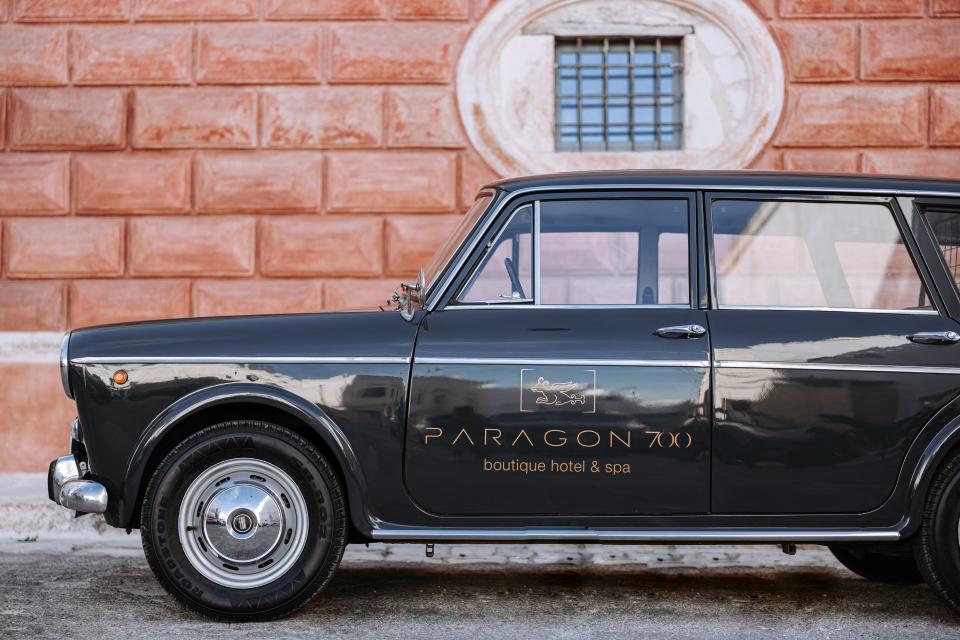
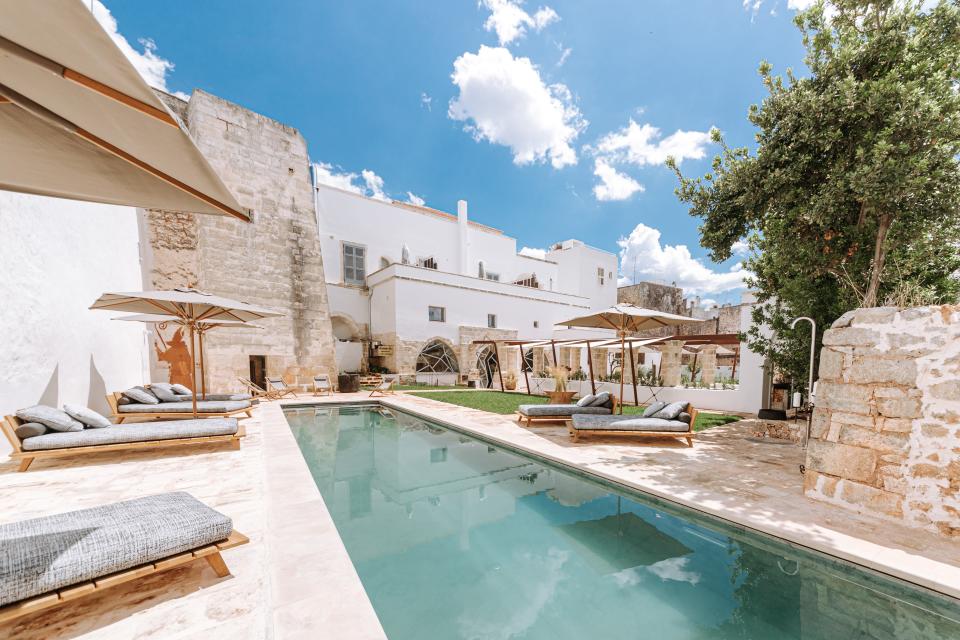
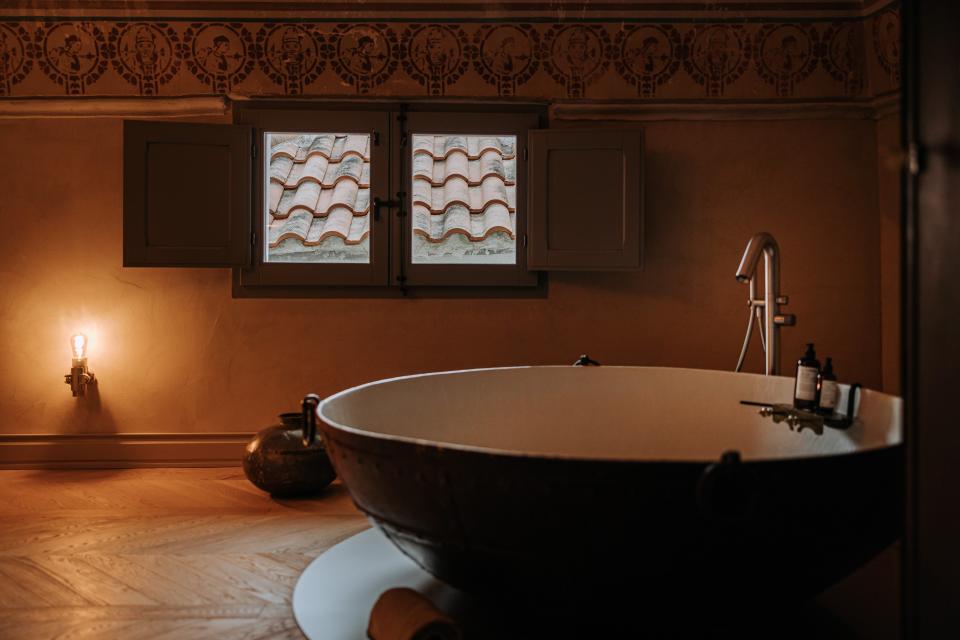
The expansive bar area is Baroque by way of Tim Burton: statues of macabre grinning monkeys sit next to defaced reinterpretations of Renaissance paintings, while candelabras dripping with red wax line the tables where artist-designed sofas are upholstered with sewn-together silk ties. The hotel’s 11 individually designed rooms are intentionally more relaxed, with frescoed ceilings, offbeat but warm lighting fixtures, and stonewashed linen sheets. Despite the flamboyant trappings of its decor, however, both wellness and sustainability are a priority here. The spa, reached by glass elevator and built into the underground caves that are atmospherically lit with candles, feature a hydromassage basin, a Turkish bath, a Himalayan salt wall, and even a natural whirlpool dug deeper into the ground. Meanwhile, the hotel’s commitments to micro-CHP energy, zero plastics, and local construction materials are also notable.
Probably the biggest facet of Paragon 700’s appeal, though, is its prime location within Ostuni, one of the most popular tourist destinations in the region, but that somehow manages never to feel wildly overcrowded. Getting lost in the city’s labyrinth of alleyways and admiring its Gothic cathedral are unmissable elements of a Puglian vacation all on their own—but knowing you can return to the homely environs of Paragon 700 for a refreshing dip in the pool, a cocktail as delightfully offbeat as the decor, and finally a meal in their gourmet, open-kitchen Restaurant 700 to round off the evening makes the experience all the sweeter.
Originally Appeared on Vogue

